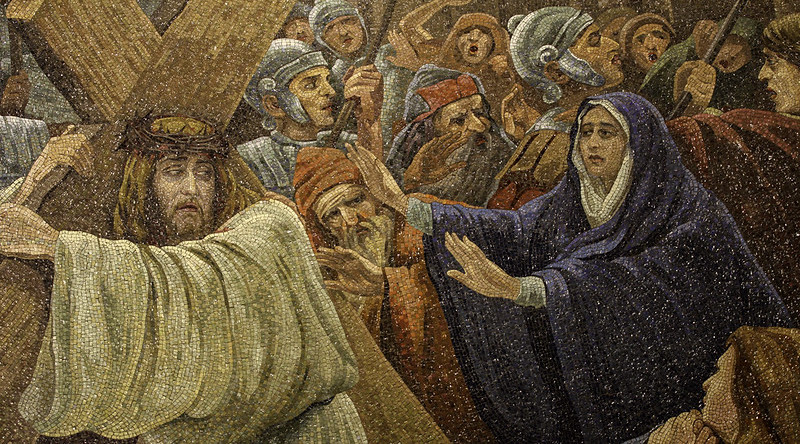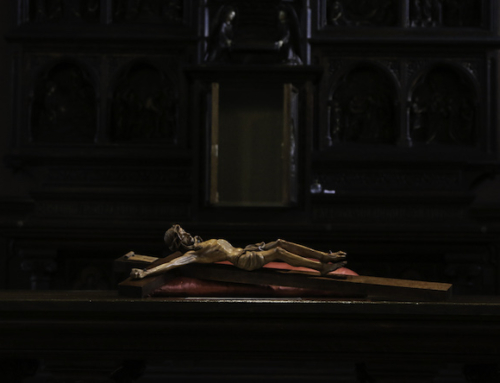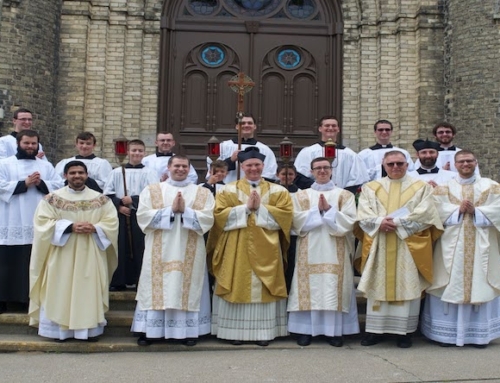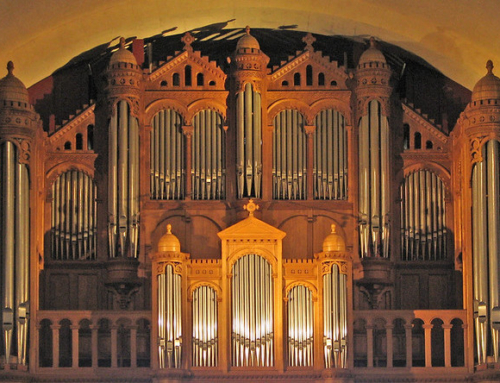Many people, even many Christians, think Catholics are too focused on penance, suffering, and the cross. Are they right about this? Today, for example, the Church joyfully proclaims Alleluia! and only a few moments later we hear an old man’s seemingly morbid words to a new mother: “And you yourself a sword will pierce so that the thoughts of many hearts may be revealed” (Luke 2:35).
The Church, however, doesn’t celebrate sorrow for its own sake, but because it reveals something to us. Simeon’s words show that Mary and Jesus’ hearts are united in the immense sorrow of the Passion. Once pierced, their hearts pour out sorrow on those who contemplate them, and this is the beauty of celebrating Our Lady of Sorrows. What pierces the heart is not just a sad state of affairs, but the Word of God that “is living and active, sharper than any two-edged sword, piercing to the division of soul and spirit, of joints and marrow, and discerning the thoughts and intentions of the heart” (Heb 4:12). What does this sorrow reveal? It uncovers another heart that is pierced by our sins: not just Mary’s heart, but also the Church’s.
The sword that pierces Mary’s heart reveals the ugliness of sin and its consequences, manifested especially on the cross. The horror of sin is still present today, and the Church’s members have not been spared of its affliction. The sword that pierces the Church’s heart can cut her off from the world, often in painful ways. Bede the Venerable gets to the heart of the matter:
“But even to this day the sword of the most severe tribulation does not cease to pierce the soul of the Church when she hears the faith contradicted by the wicked; when she hears of the word of God that many will rise again with Christ, but sees many running away from the faith; and when the thoughts of many hearts are revealed in which she sowed the good seed of the Gospel, but sees there that the weeds of vice are either overgrown or the only things growing.”
Even within the Church herself, the sword of sorrow and sin seems to divide her into factions and ideologies. Is this what we celebrate today? Is this what our Sorrowful Mother shares with us?
Mary’s example is not one of wallowing in misery. It instead drives the Church toward the real treasure that lies beneath the tears. We celebrate this sorrow because it reveals true love. We are sorrowful because that is what love does when faced with evil. Because of this love, we look upon Christ as he hangs on the cross, a cause of immense sorrow and yet the greatest instrument of love. We see him not only as a victim, but also as our Savior. Mary looked upon her Son in the same way, and it was this sight she treasured in her pierced heart. Saint Ambrose expressed this in one of his letters:
“Mary, as befits the mother of our Lord, stood before the cross when the Apostles fled and with pitiful eyes beheld the wounds of her Son. For she looked not on the death of the hostage, but on the salvation of the world. And perhaps knowing that her Son’s death would bring about this salvation, she who had been in the court of the King thought that by her death she might add to that gift for his people.”
The Church is likewise pierced by the sword of our sins. But this is not meant to divide her. It uncovers the same incredible love that saves souls. This love unites us rather than separating us: “I in them and thou in me, that they may become perfectly one, so that the world may know that thou hast sent me and hast loved them even as thou hast loved me” (John 17:23).
Desiring this love, we confidently cry out to our Sorrowful Mother in the Stabat Mater: “Virgin of all virgins blest, listen to my fond request, let me share thy grief divine!”
✠
Photo by Fr. Lawrence Lew, O.P. (used with permission)







